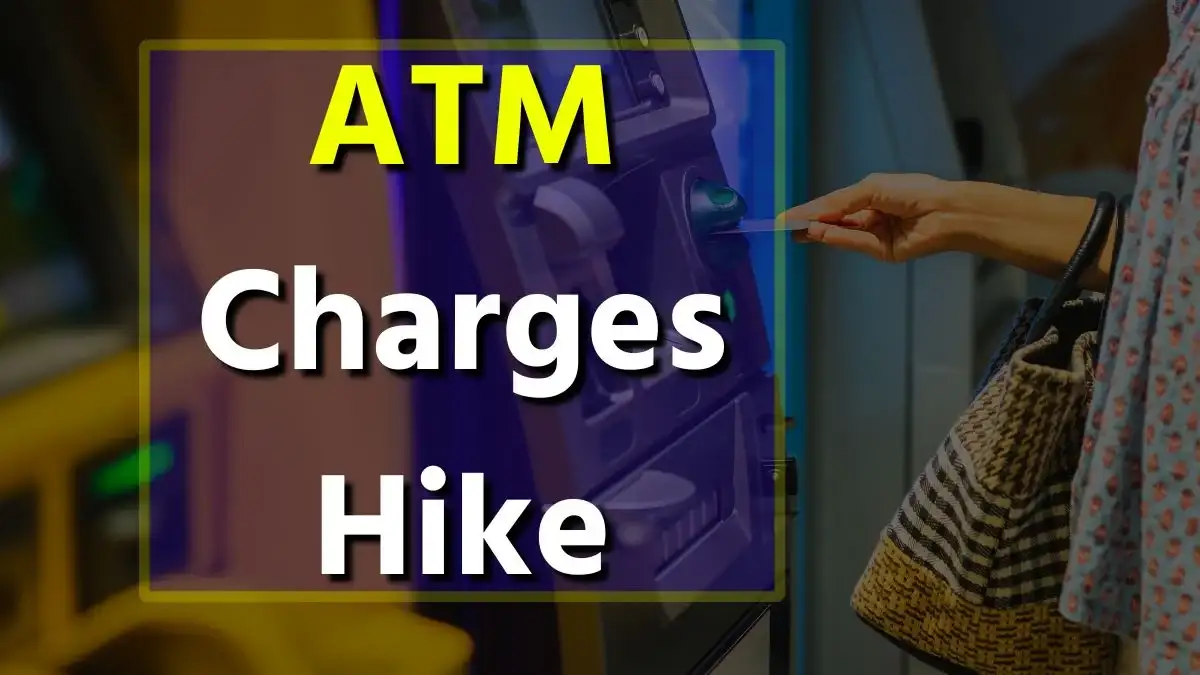ATM Charges Hiked to Rs 23 for Extra Withdrawals! New Rules and FD Rates Effective from May 1, 2025 – All You Need to Know

As of May 1, 2025, several important updates have come into effect in India’s banking landscape. These include an increase in ATM transaction fees and revisions in fixed deposit (FD) interest rates by leading banks. The changes are expected to impact everyday banking habits, especially for people who rely on cash withdrawals or look to FDs for secure returns.
Here’s a breakdown of all the major financial changes that kicked in this month, and how they could affect your money.
Higher ATM Charges: What Has Changed?
The Reserve Bank of India (RBI) has permitted banks to raise the fee for cash withdrawals beyond the free monthly limit. Customers will now pay Rs 23 per additional ATM transaction, up from the previous Rs 21. This hike applies specifically when you’ve crossed your free transaction quota at ATMs that don’t belong to your bank.

Free Usage Limits Remain Unchanged
Customers still enjoy a set number of free transactions every month:
- 5 free uses at ATMs of your own bank
- 3 free uses at other bank ATMs in metro cities
- 5 free uses at other bank ATMs in non-metro locations
Once you exceed these, every extra withdrawal will cost Rs 23.
Why the Fee Increase?
According to the RBI and banking experts, the cost of maintaining ATM infrastructure—covering security, cash handling, maintenance, and technology upgrades—has steadily gone up. This revision is intended to allow banks to offset those rising expenses while continuing to expand ATM access, especially in rural areas.
Though it might not impact those who rely more on digital payments, cash-dependent users, particularly in smaller towns and villages, could feel the pinch if they exceed their monthly free limit.
Revised Fixed Deposit (FD) Rates – Where Should You Invest?
Alongside the ATM fee revision, several top banks in India have modified their fixed deposit interest rates to align with current economic conditions. These updated rates could benefit those looking for low-risk, steady returns.
Here’s how some of the major banks stack up after the latest rate changes:

State Bank of India (SBI):
- 3 to 6 months: 4.50%
- 1 year: 6.80%
- 2 to 3 years: 7.00%
- Senior citizens: Up to 7.50% for longer tenures
HDFC Bank:
- 3 to 6 months: 4.75%
- 1 year: 7.00%
- 2 to 3 years: 7.10%
- Senior citizens: Up to 7.60%
ICICI Bank:
- 3 to 6 months: 4.75%
- 1 year: 6.90%
- 2 to 3 years: 7.00%
- Senior citizens: Additional 0.50% across all terms
These changes present a good opportunity for conservative investors to lock in competitive rates, especially if market interest rates remain flat in the near term.
What Do These Changes Mean for You?
If you often withdraw cash:
- Be cautious of how often you use ATMs, especially those of other banks.
- Consider using UPI or mobile banking apps to reduce unnecessary ATM trips.
- Check if your bank offers extra perks like cashback or zero charges on premium accounts.
If you invest in fixed deposits:
- Shop around before choosing a bank—rates can vary significantly.
- Use FD ladders to maintain liquidity while still benefiting from high rates.
- Older individuals should explore special senior citizen schemes that offer enhanced interest rates.
Public Reaction and Expert Take
The increase in ATM charges has sparked debate. Many banks argue the hike is reasonable given the growing expenses associated with ATM networks. But consumer advocates worry it may burden those who rely on physical cash, especially in regions where digital payments are still catching on.
Meanwhile, analysts suggest the FD rate tweaks are a sign that banks are adjusting to stable inflation levels and moderate credit demand. Most believe rates are likely to stay where they are for the next few quarters unless there’s a significant policy change from the RBI.
Final Thoughts
The beginning of May 2025 has brought in some crucial changes that could influence how you manage your everyday finances. While the Rs 23 ATM fee may seem small, it can add up quickly if you’re not mindful of your withdrawals. On the brighter side, revised FD rates give savers a chance to lock in higher returns—making it a smart time to plan your deposits.
By adjusting your banking habits slightly and staying informed, you can minimize extra costs and make better use of the new rates and rules.






